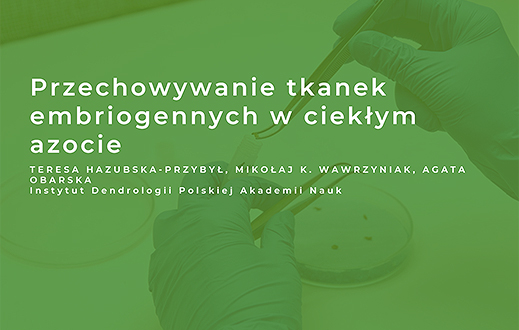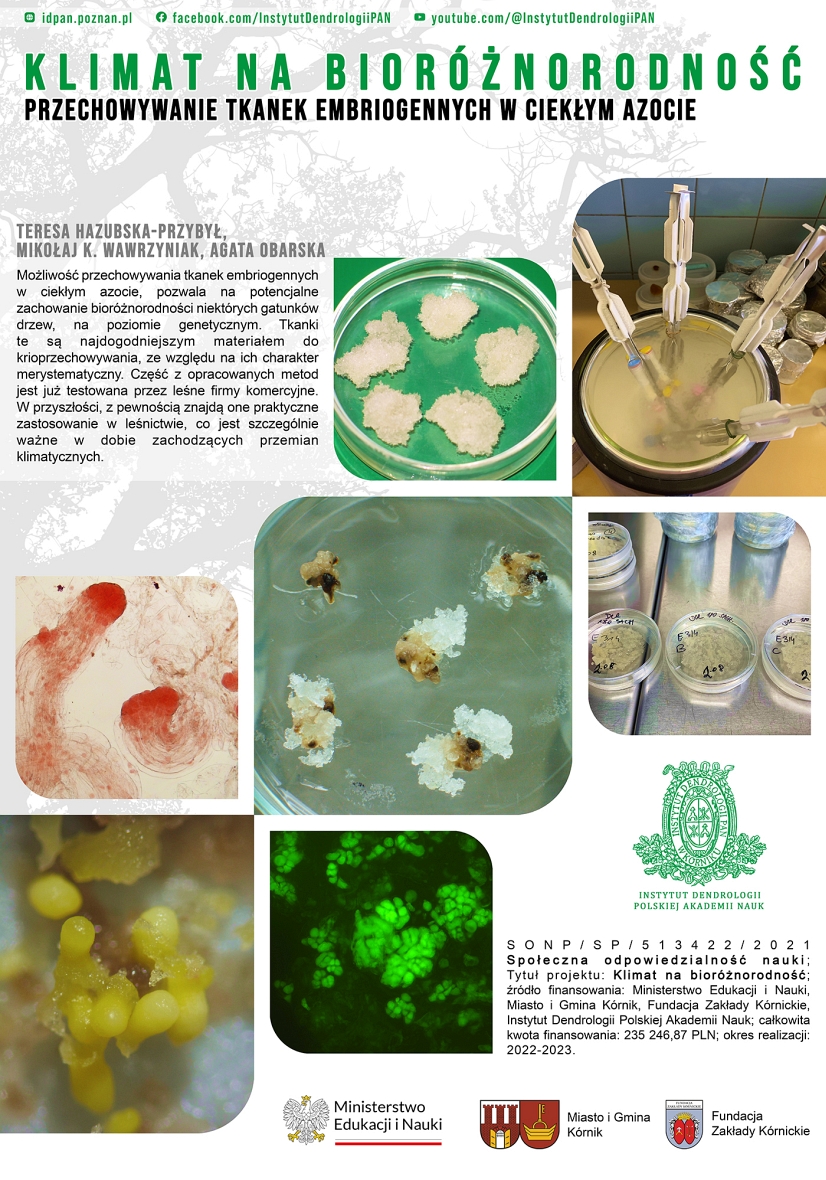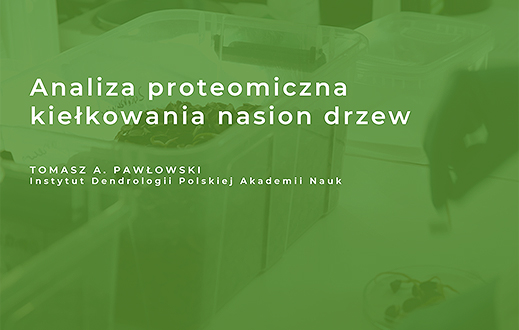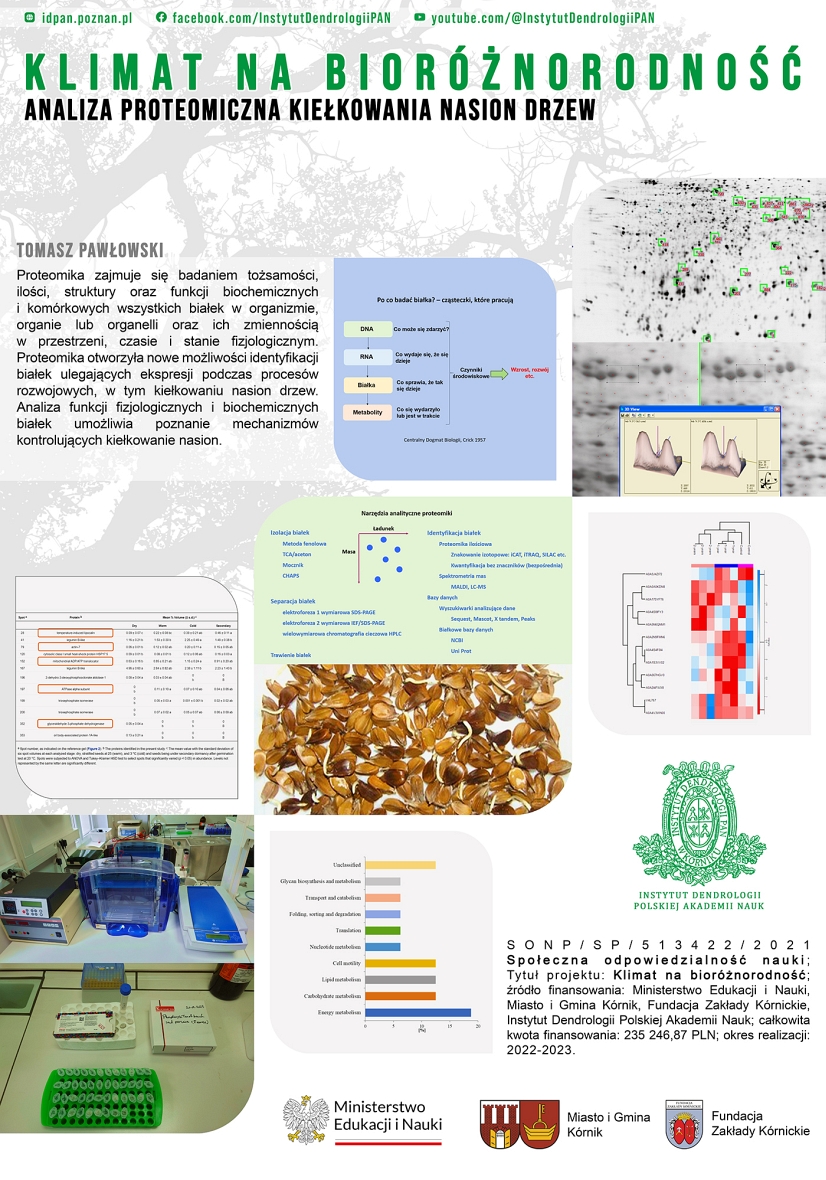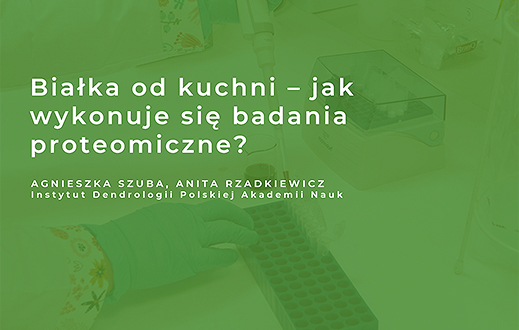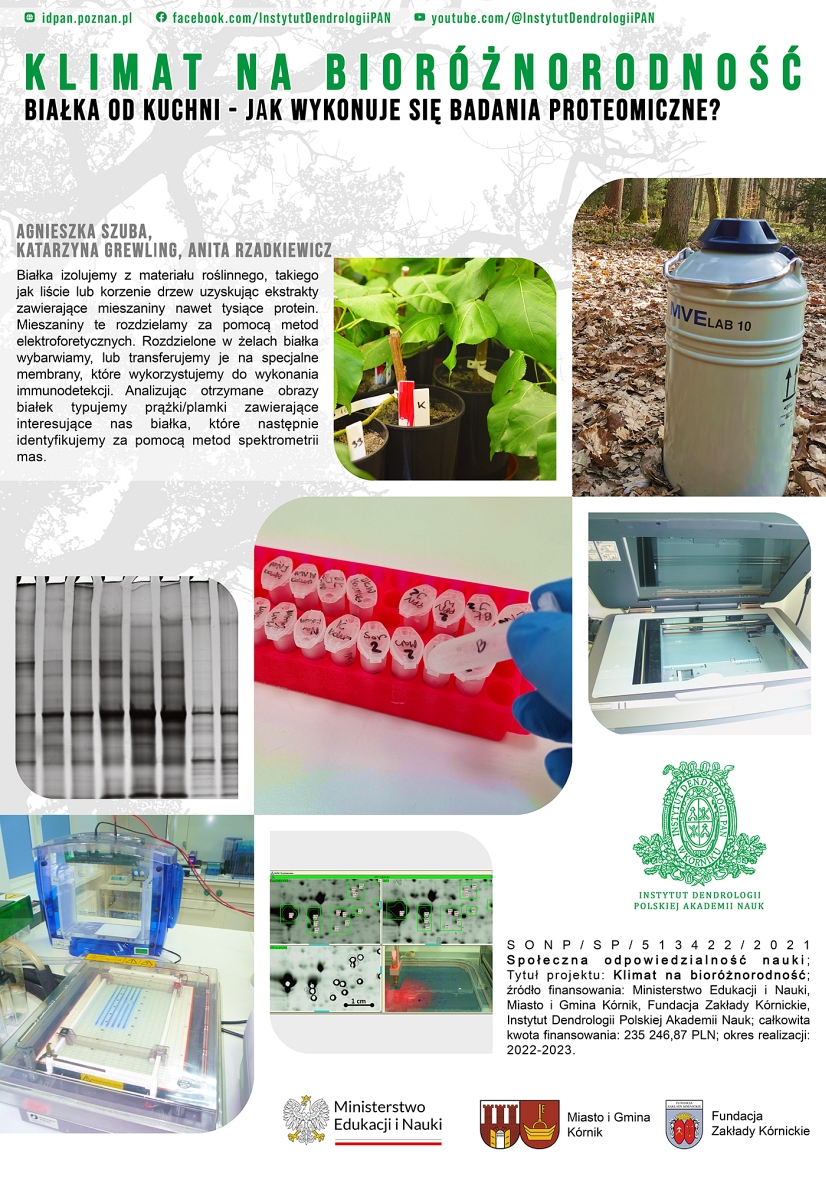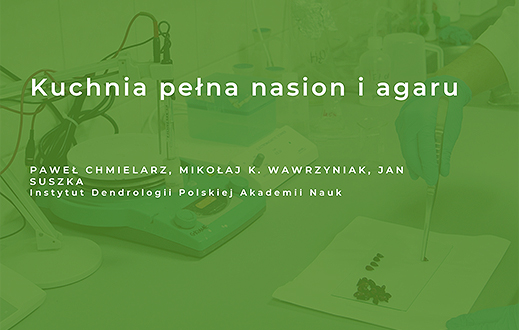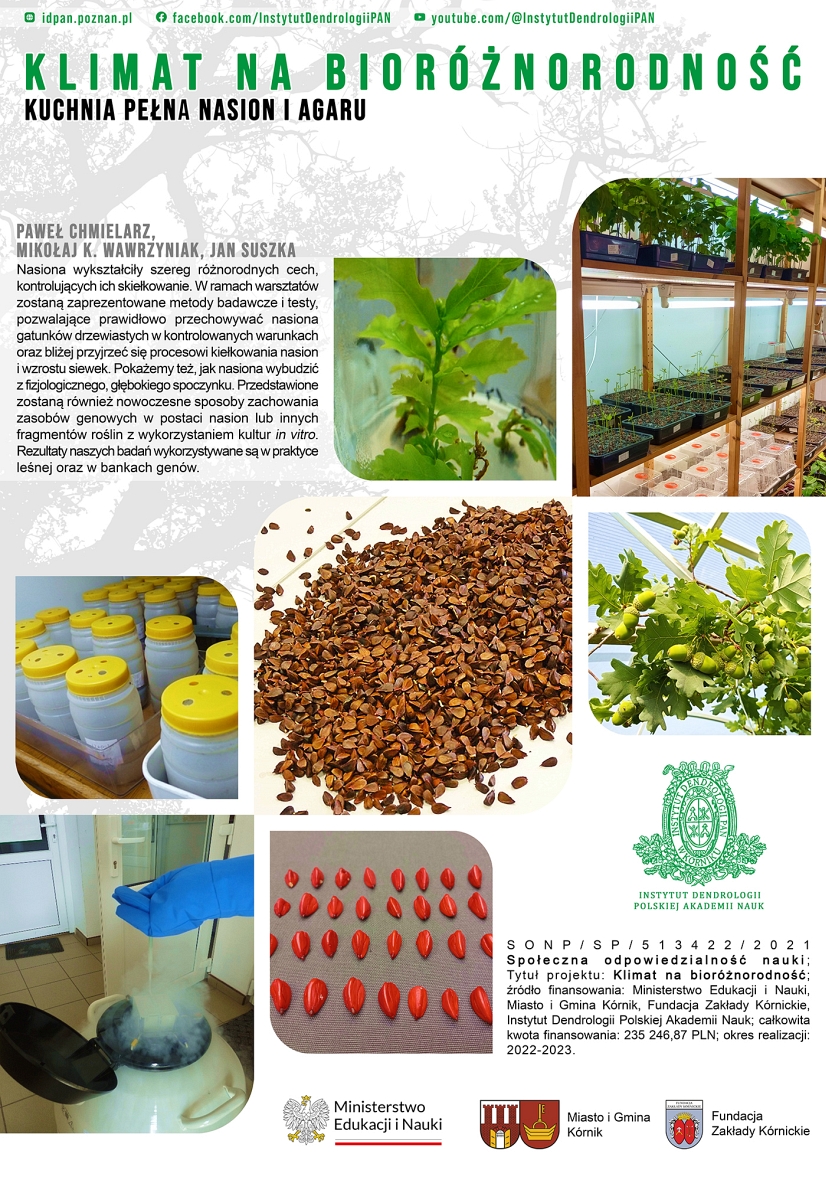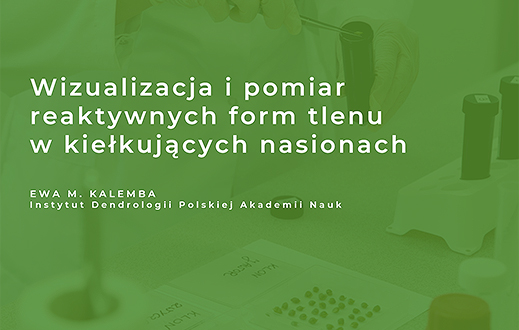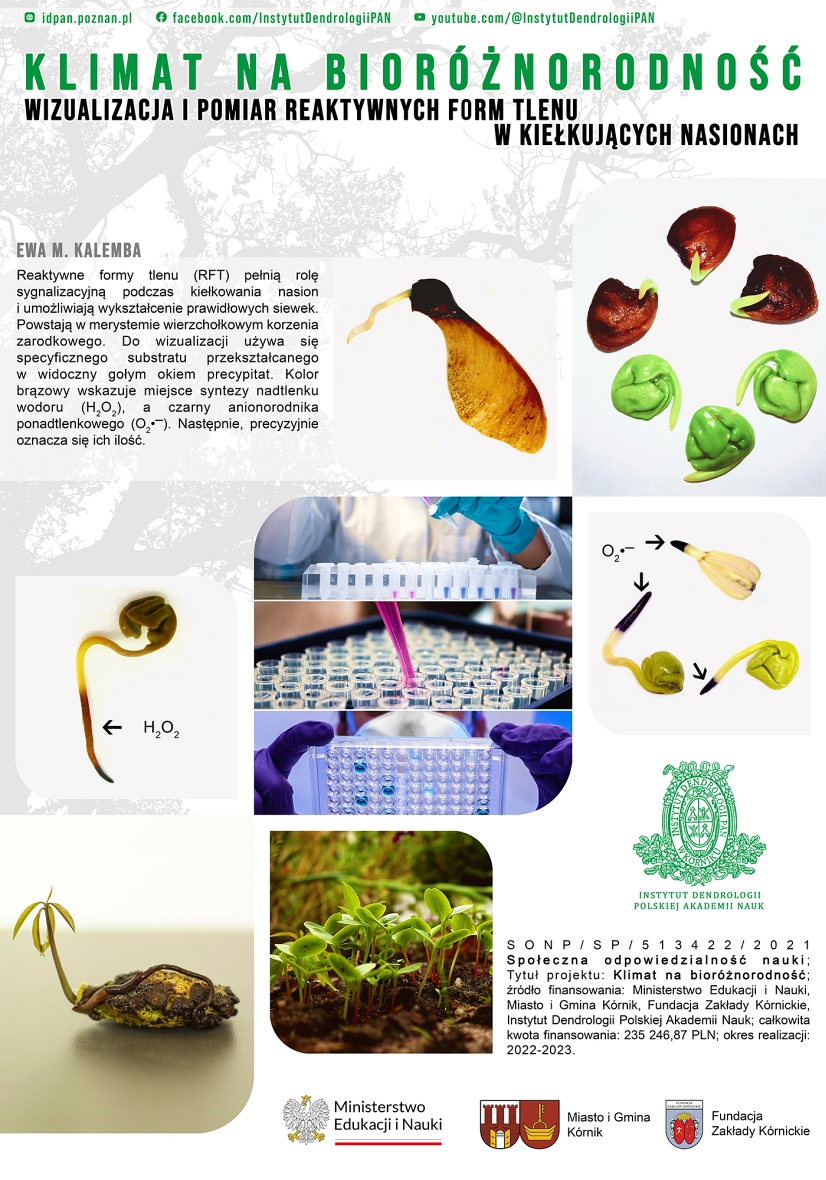We kindly invite you to listen to the workshop led by Dr. Teresa Hazubska-Przybył, Dr. Mikołaj K. Wawrzyniak and M.Sc. Agata Obarska, titled “Cryopreservation of embryogenic tissues in liquid nitrogen.”
The ability to store embryogenic tissues in liquid nitrogen offers the potential to preserve the genetic-level biodiversity of certain tree species. These tissues are the most suitable material for cryopreservation due to their meristematic nature. Some of the methods developed have already been tested by commercial forestry companies. In the future, they will undoubtedly find practical applications in forestry, which is especially important in the face of ongoing climate change.
We kindly invite you to listen to the workshop led by Prof. Tomasz A. Pawłowski, titled “Proteomic analysis of tree seed germination.”
Proteomics deals with studying the identity, quantity, structure, and biochemical as well as cellular functions of all proteins in an organism, organ, or organelle, along with their variability in space, time, and physiological state. Proteomics has opened new possibilities for identifying proteins expressed during developmental processes, including the germination of tree seeds. Analyzing the physiological and biochemical functions of proteins makes it possible to understand the mechanisms that control seed germination.
We kindly invite you to listen to the workshop led by Dr. Agnieszka Szuba and M.Sc. Anita Rzadkiewicz, titled “Proteins from the inside – how are proteomic studies conducted?”
We isolate proteins from plant material, such as leaves or tree roots, yielding extracts that can contain mixtures of up to thousands of proteins. These mixtures are then separated using electrophoretic methods. Proteins resolved in gels are either stained or transferred onto specialized membranes, which are then used for immunodetection. By analyzing the resulting protein images, we select bands or spots containing the proteins of interest and subsequently identify them using mass spectrometry methods.
We kindly invite you to listen to the workshop led by Prof. Paweł Chmielarz, Dr. Mikołaj K. Wawrzyniak and Dr. Jan Suszka, titled “A kitchen full of seeds and agar.”
Seeds have developed a range of diverse traits that regulate their germination. During the workshop, we will present research methods and tests that enable proper storage of woody species seeds under controlled conditions and allow for a closer examination of the seed germination process and seedling growth. We will also demonstrate how to break seeds out of a deep physiological dormancy. Furthermore, we will introduce modern approaches to preserving genetic resources in the form of seeds. The results of our research are applied in forestry practice and in gene banks.
.
We kindly invite you to listen to the workshop led by Prof. Ewa M. Kalemba, titled “Visualization and measurement of reactive oxygen species in germinating seeds.”
Reactive oxygen species (ROS) serve a signaling function during seed germination and enable the development of normal seedlings. They are produced in the apical meristem of the embryonic root. For visualization, a specific substrate is used that is converted into a precipitate visible to the naked eye. A brown color indicates the site of hydrogen peroxide (H2O2) synthesis, whereas black indicates the superoxide anion (O2•–). Subsequently, their quantities are precisely measured.
.











